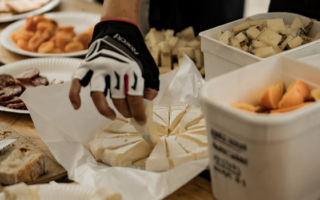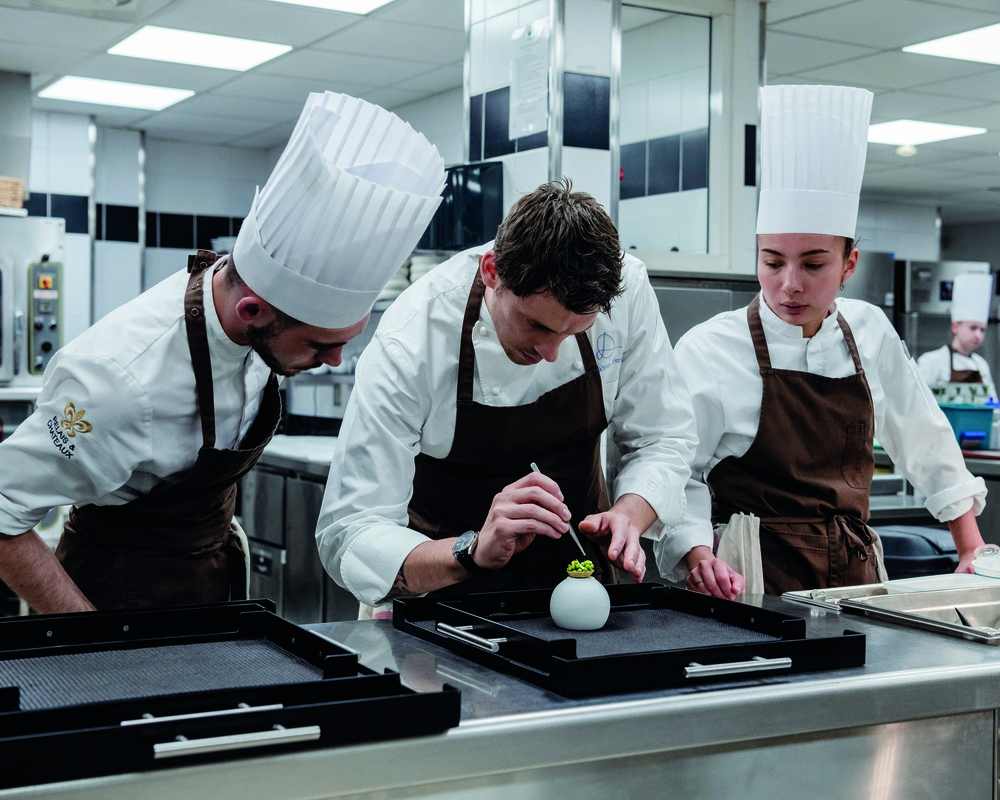
Fabien Ferré: Jumping from 0 to 3 Michelin Stars
At 36, Fabien Ferré is the youngest three-starred chef in the Michelin Guide. Dominic Bliss finds out what’s on the menu next for this brilliant culinary star…
Should Fabien Ferré ever find himself facing death – unlikely since he’s only 36 years old and fighting fit -he says he would choose roast chicken and potatoes as his last supper. “If I’m going to die tomorrow, I’d want a very simple dish I could enjoy with the people I love,” says the native Burgundian who is currently the youngest three-starred chef in the Michelin Guide. “I’d want something comforting. For dessert I’d choose rice pudding. For cheese, maybe a Tomme d’Alsace, or a little chèvre de pays from Provence.
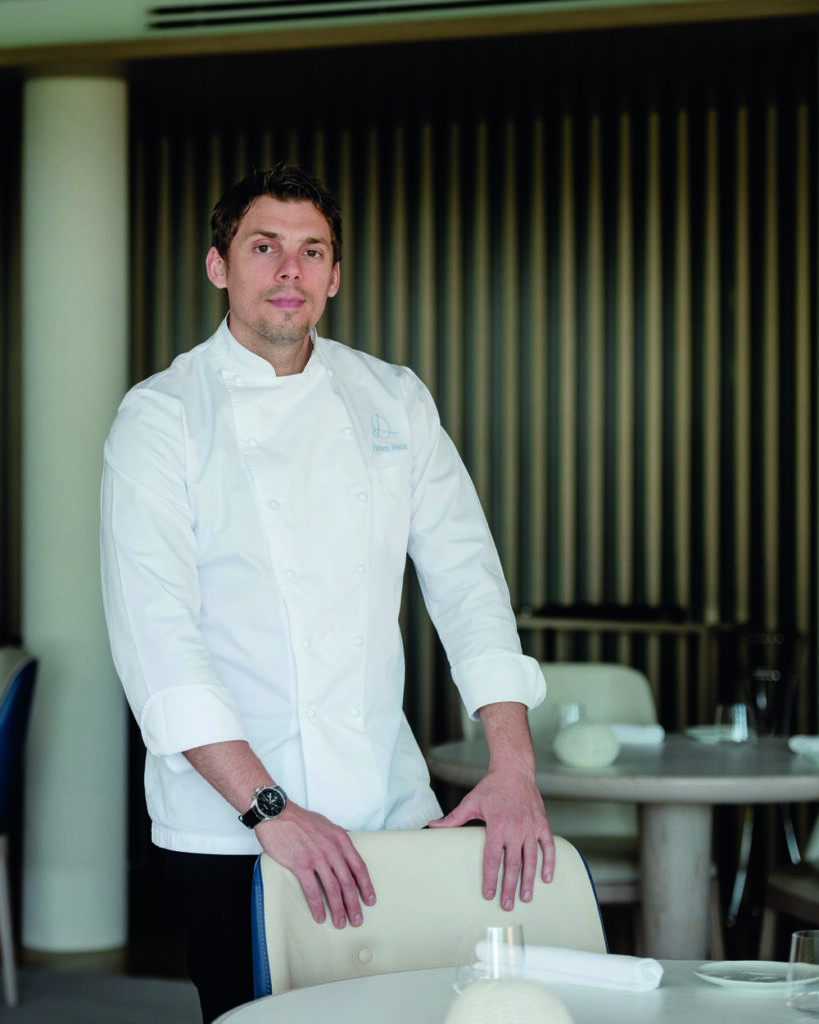
In contrast, the type of cuisine he offers at La Table du Castellet (his restaurant in the Hôtel & Spa du Castellet, in the foothills of Provence between Marseille and Toulon) is far more sophisticated. Business has been closed for the winter, due to reopen on March 20, but last year he offered dishes such as mushrooms with cherries and almonds, fennel with absinthe, squid, pigeon, and mackerel fillet in aloe vera vinaigrette.
Here is how the Michelin Guide described his cuisine when they awarded him his stars: “Ferré crafts a high-flying veggie and seafood score, starring dishes such as shrimp carabineros with Meyer lemon and coral roe sauce, or squid in marjoram. His refined and virtuoso cuisine elevates the natural flavour of the ingredients, bolstered by memorable full-bodied sauces.”
When Fabien spoke to Taste of France, he hadn’t yet decided on his 2025 menu. “I have a blank piece of paper in front of me,” he said. “Of course there will be food from the terroir, artisanal dishes, seasonal products, olive oil, fish and seafood from the Mediterranean. I’m not going to totally break the mould. But my priority – my constant battle, as I call it – is to prioritise taste above everything else. I want there to be taste, taste, taste. I want to allow my clients to taste in a way they’re perhaps not used to.”
Despite growing up in Burgundy, Fabien says his favourite cuisine by far is that of Provence. “Its local products, its sun-drenched fruit and vegetables, its olive oil… it’s all really important to me. I’m very attached to the Provençal terroir.”
Mediterranean mood
Just 11km from the sea, the Hôtel & Spa du Castellet has a distinctly Mediterranean feel to it-whether it’s the cypress, olive and lime trees scattered throughout the gardens; or the stone fountains and lavender beds, or the terracotta roof tiles; or the market at nearby Sanary-sur-Mer, where Fabien sources many of his ingredients.
He holds the record for being the first chef in Michelin Guide history to leap straight from zero stars to three stars. There’s not necessarily a secret,” he says of his success. “We already had a restaurant at Le Castellet with three stars since 2018. I took the reins of the whole kitchen, and I inherited a team that already had three stars. It was an accelerator. So, in a way, I was lucky.” If you need an indication of the type of clientele Fabien attracts, then you only need to glance north from the hotel where, just a stone’s throw. away is the tiny Aéroport du Castellet. Here private jets regularly arrive from all over Europe, disgorging uber-wealthy passengers, some of whom no doubt treat themselves to Fabien’s delicious cooking.
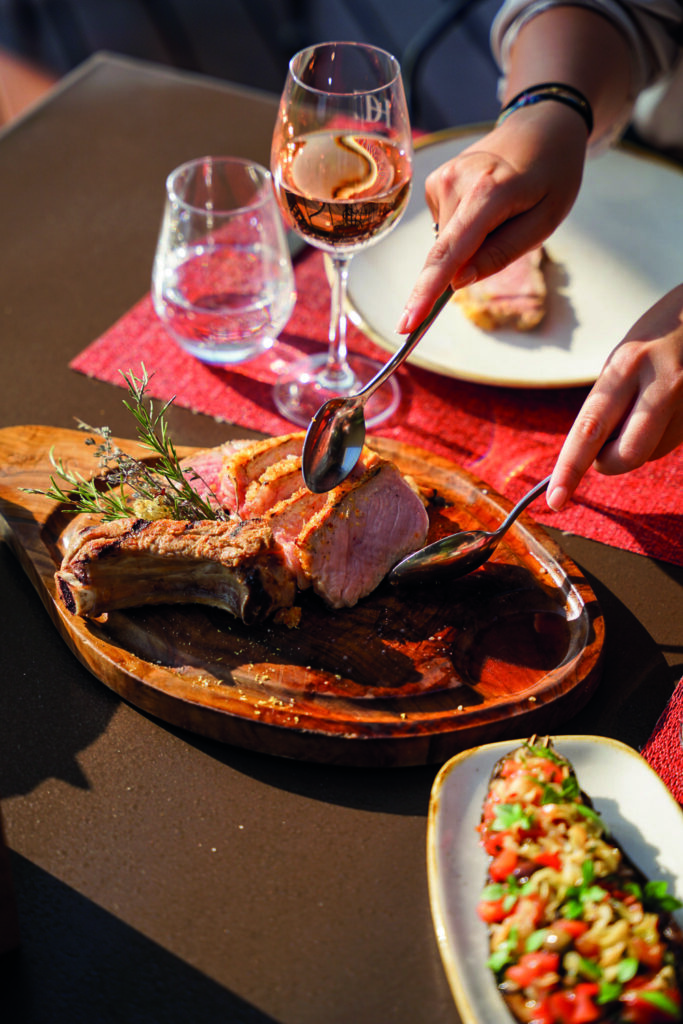
This chef’s own journey started far away from here in a small town called Autun, not far southwest of Dijon. His parents were pâtissiers and chocolate makers. His grandparents were farmers-his grandmother in particular a very skilled cook – and he would spend many summer holidays with them. “I would see lots of farmers and market gardeners, and I got used to being around the food industry, Fabien remembers. “I loved it. It guided my career somewhat. Today I really appreciate food producers and artisans, and I try to bring that to life across my cuisine.” Young Fabien also had a best friend, Franck Pelux, whose parents owned a restaurant nearby. They would often invite Fabien to spend weekends there so that he experienced first-hand what it was like to run a restaurant. (Pelux is now also a successful chef, at a restaurant in the Swiss city of Lausanne, with two Michelin stars to his name.)
At just 14 years of age, Fabien embarked on an apprenticeship at a nearby brasserie called Le Rempart, on the banks of the River Saône. He immediately fell in love with the catering trade. “I’m a very manual person and a bit hyperactive,” he says, which if you talk to him is obvious from the staccato delivery of his conversation. The most important thing was that I loved bringing pleasure to other people through food. To generate emotion through the dishes I created – that gave me a thrill.”
From Le Rempart, he progressed through three more restaurants, also on the River Saône, before ending up at the three-Michelin-starred Maison Troisgros near Roanne. After that, in 2013, he headed south to the Hotel & Spa du Castellet, first as junior chef before gradually working his way up through the kitchen hierarchy. Eventually, in 2023, he took over as head chef and, a year later, was awarded his own three stars.
Some chefs say such accolades from Michelin are both a blessing and a curse. Yes, they firmly place your restaurant on the culinary map, but they also bring with them enormous pressure: the pressure to win more stars and, even worse, the pressure not to lose the stars you already possess. On rare occasions, certain restaurateurs have even asked Michelin to revoke stars because they felt they created unreasonable expectations from customers or the need to spend extra money on service and interior décor. There’s the tragic story of French chef Bernard Loiseau who shot himself dead in 2003. Although he suffered from depression, it’s widely believed the threat of losing a Michelin star contributed to his suicide.
Fabien says there are plenty of restaurants without Michelin stars that still shine brightly. However, he in no way denigrates the Michelin Guide. Today, one star, two stars or three stars are a true gauge of quality,” he explains. “They also make life easier for us because they help us with publicity and with recruitment. No one should spit on the Michelin Guide. It’s an excellent guide and I support it. It has put us on a pedestal and now we must fight to stay at the top.
Nevertheless, he understands there are people who believe the guide is no longer the gastronomic bible it was once considered. “Even though I can’t climb into the heads of the inspectors who work for it, I’m convinced they know what they’re doing,” he says. He explains how there are multiple qualities that contribute to his restaurant’s three stars, “At the very basic level, it’s the welcome we provide,” he says. “If customers are badly welcomed, or if they get the impression they’re inconveniencing the staff, it’s just not going to work. Diners won’t have a good evening, that’s obvious.”
Standards of service
Next, it’s the waiter service that is crucial. “You want a pleasant service, with smiling waiters,” he says. “You don’t want the feeling you’re always being watched over by obsequious waiters. You want a relaxed atmosphere.”
Then, Fabien stresses, there’s a need for what he calls a “rhythmical service”. He explains: “You don’t want to be waiting for an hour for each course, otherwise your appetite will disappear completely. For that reason I try never to have more than 15 minutes between each course.”
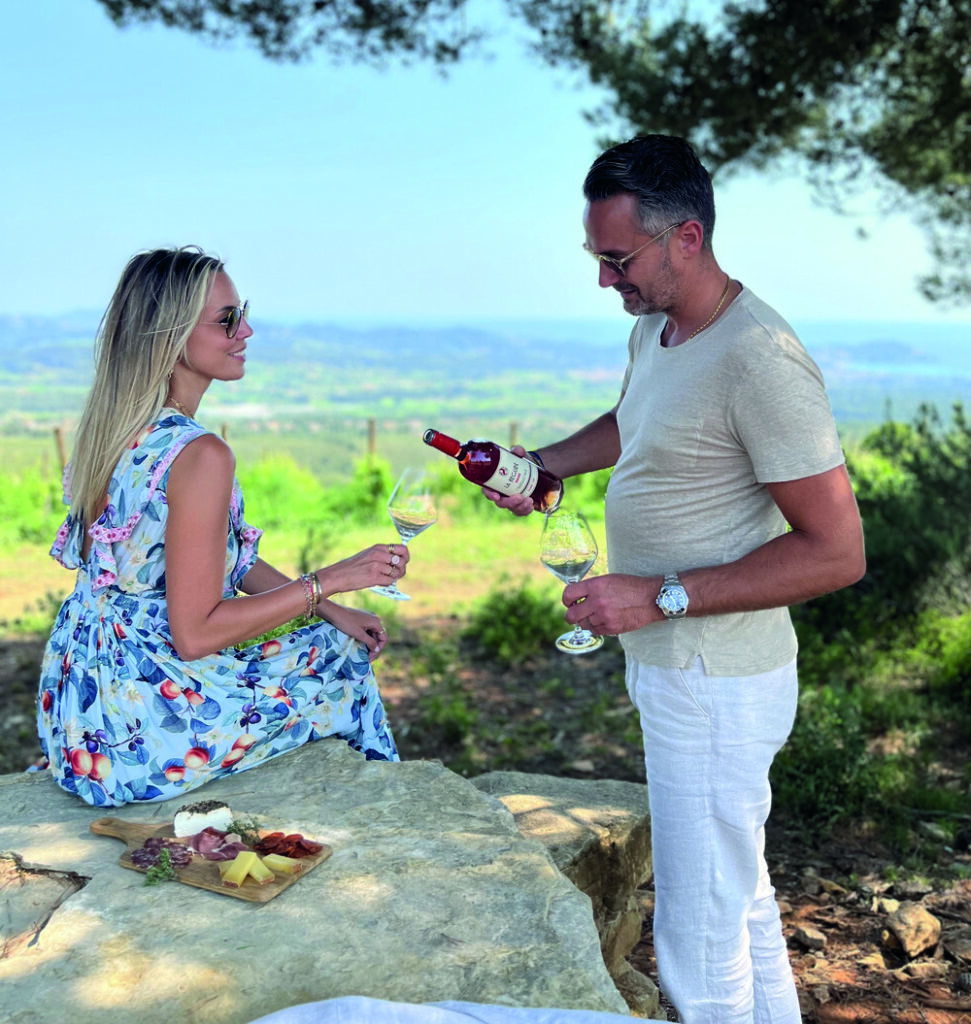
Of course, most important of all is the quality of the food, he insists – that and the sommelier’s pairing of the wine with the food. He also never underestimates the importance of dessert. “That’s the final note of the meal: the last impression diners have,” he says. “So it has to be just right. But La Table du Castellet has a few other tricks up its sleeve.
Unmissable is the cave à fromages, a room adjacent to the main dining room where all the cheeses are kept at a constant 15°C. “We normally have between 50 and 80 different cheeses down there, depending on the season,” he enthuses. “We invite diners to come into the cave and choose their own selection of cheeses, with confiture and bread. And we make a lovely salad to go with it. Lots of Époisses de Bourgogne, because that’s my home region. Unfortunately we don’t have that many cheeses in Provence but we make sure we stock all the Provençal goat’s cheeses, of course.” Fabien explains how unusual a cave à fromages is. He believes his predecessor at La Table du Castellet, Christophe Bracquié, was one of the first to incorporate one into a restaurant, and he is determined to continue the tradition. His American customers particularly love it. “They say, Oh my god! So much cheese!” he explains, adopting an American accent.
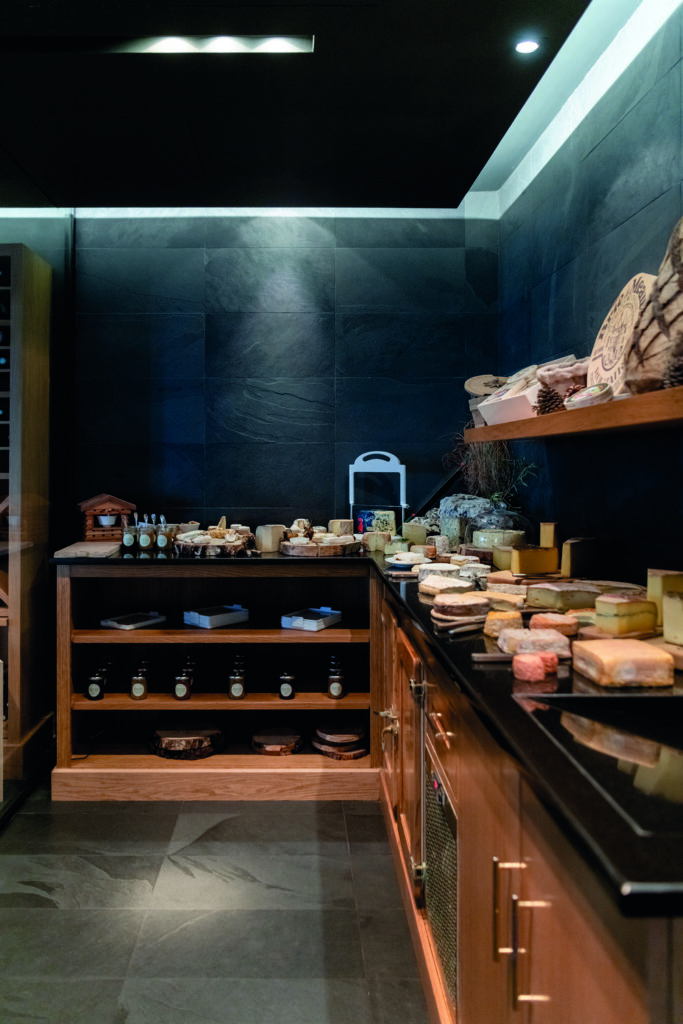
Finally, there’s Fabien’s mind-bogglingly impressive wine list, overseen by his sommelier, Jonathan Pral. Which brings us back to Fabien’s last supper. Which wine would he choose to go with his roast chicken and potatoes? Unlike his food choice, he opts for something very sophisticated indeed, and certainly nothing his sommelier would ever be likely to pair with chicken.
“Td choose a Romanée-Conti,” he concludes, “It’s a Burgundy, of course. If it’s the last wine I’m ever going to drink, I need to take my choice very seriously.
www.hotelducastellet.net/fr/restaurants/restaurant-gastronomique
Looking for more French food and drink content?
In our magazine we offer a whirlwind tour of the best gastronomic destinations. Discover La Belle France’s renowned markets, quirkiest food festivals, most indulgent restaurants and foodie experiences.

Lead photo credit : © C DUTREY, HÔTEL & SPA DU CASTELLET, LE GUIDE SÉSAME
Share to: Facebook Twitter LinkedIn Email
More in Chef, Michelin, Restaurants


